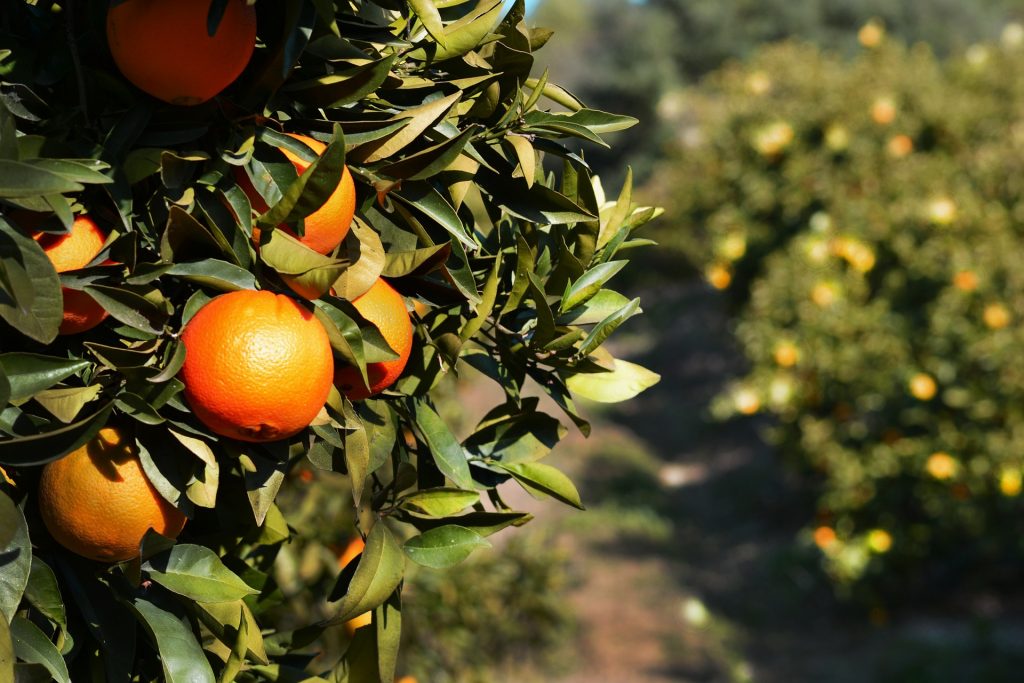
At a casual glance, you might conclude that the California citrus industry has been outmaneuvered and overcome by the tiny wasp known as the Asian citrus psyllid (ACP). But a closer look tells you that motivated research is underway to confine and control the little rascal.
Growers surrounded by their trees know just as well as the laboratory and field examiners that this insect packs a dangerous punch. One reason it commands respect is that it carries a deadly disease that few can pronounce on the first try – huanglongbin, a sure killer if not controlled. Mercifully it has been given an abbreviated shorthand identification: HLB.
Even in its abbreviated form, mention of the name gives citrus growers and others in the industry in Florida a painful flashback. The disease carried by the energetic little wasp has devastated Florida’s flourishing citrus industry during the past 12 to 15 years. The citrus industry in California is determined that it not happen here.
Part of the array of research projects designed to understand the insidious wasp and lead to its control is presented in the citrus industry’s aptly named and eminently attractive monthly publication Citrograph. Its publisher is the Citrus Research Board located in Visalia, a key city in Central California’s citrus empire.
One of the magazine’s strategic announcements is the re-accreditation of a strategic laboratory in Riverside, the Jerry Dimitman facility, with its highly qualified staff of 10 scientists. Described as a high throughput molecular diagnostic facility, it was opened by the CRB in 2011 in direct response to confirmation of the first ACP find in an orchard in San Diego County in 2008.
Partly because the pest has been discovered on so many residential properties — 600 in 2018 alone — an extensive outreach program has been developed to inform and direct homeowners and occupants about the dangers inherent in the pest’s existence. One article tells how residents can identify the wasp and then alert a control unit to arrange management or eradication procedures.
Another article discusses the use of netting and completely sealed growing environments as prevention steps. Netting has been used for other purposes since the beginning of the 21st century, notably in South Africa, Israel, Australia and Spain. Authors of the article consider it an expensive but effective means of psyllid control.
The citrus industry’s long-time use of predatory insects to attack and help control damaging insects led to an article evaluating the response of three of the notable predatory insects to various pesticides commonly used by citrus growers. The continuing evaluation research is a project at both the Tulare County citrus research facility at Lind Cove and the Kearney Agricultural Research Station at Parlier in Fresno County.
Resistance by Asian Citrus Psyllid to the common pesticides cautiously used by growers to control other insect pests was measured and reported in one article. Reports were evaluated from confirmed ACP scouts, grower liaisons and pest control advisors showing that the psyllid was not showing resistance in Riverside, San Bernardino and Ventura Counties where to measurements were made.
Not specific to ACP control, two other articles were featured. One reported evaluation of pest control materials most effective for the expanding Mandarin trees in Central California, and another covered the introduction of plant-derived genes, a technique intended to increase fruit’s natural resistance to HLB.
The presentation of these strategic research projects provides strong evidence that the citrus industry is in full pursuit of information and data that will lead to its strategic defense against HLB carried by the ACP, possibly expecting a TKO — simple as ABC.









